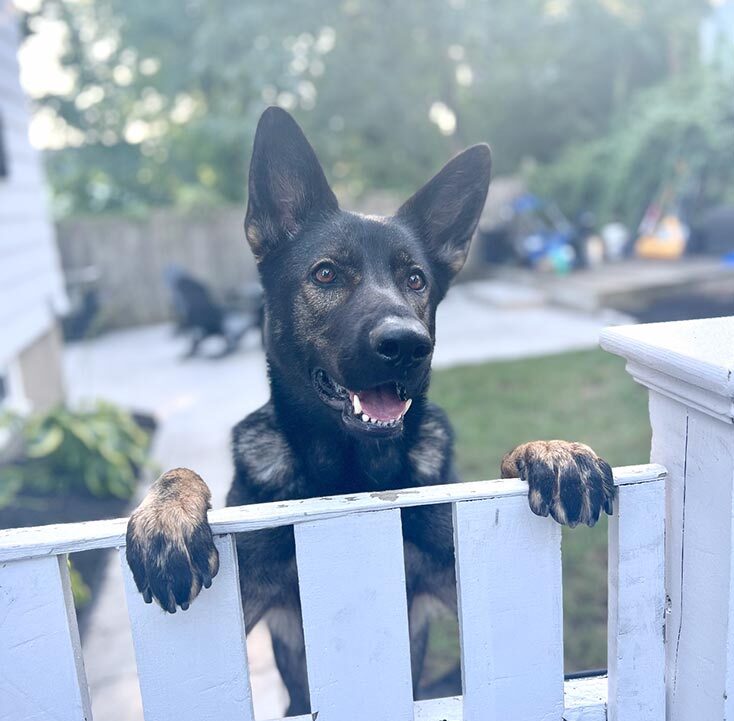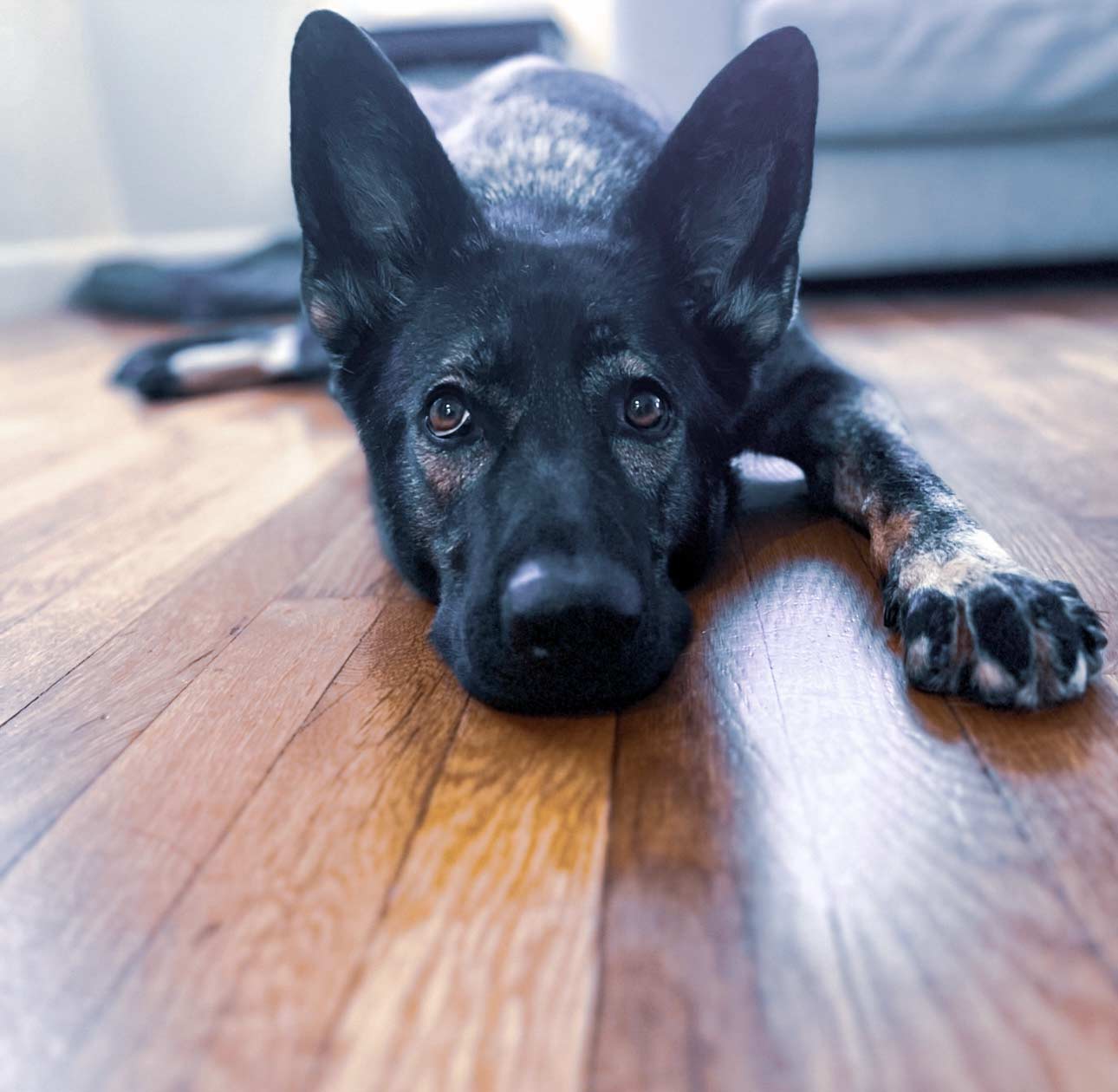Listen, I get it. You saw the most adorable Pomeranian wearing a rain jacket or you witnessed a German Shepherd walking obediently off leash in public and thought to yourself, “I’ve GOT to have one of those!” So naturally, it begs the question ‘should I get a dog?’
Trust me, no one wants you to have a dog more than I do. Dogs are great and I want everyone to have one! But, because I love mine so much, I want to highlight some things you need to consider before you take the leap to become a dog owner.
Let’s dive in.
1. Should I Get A Dog? Time Commitment
If you are getting a new puppy, you should clear some time in your schedule, and be prepared to put in some long hours. Expect to spend at least 2-3 hours a day training, socializing, restraining, watching, cleaning up after, and just generally keeping your puppy alive. Like a toddler, your fur baby doesn’t know they shouldn’t lick power outlets or eat rocks.
One On One Time With Your Dog
After you bring your new dog home you should to start working on your bond. Training, socializing, exercising, and feeding your new pup builds the bond between you. Your bond is mutual love and respect; with a strong bond, you can get a dog to do almost anything.
When puppies are between the ages of 3 and 14 weeks they are in what’s known as the socialization window. As a dog owner, it’s important to introduce your dog to as many new things as possible during this window. This will help with your bond and also teach your pup that the world isn’t scary. The more things you introduce them to, the more well-adjusted your dog will be as an adult.
Puppies Require Patience!
Puppies are adorable, but they are not always going to be fun. At some point your dog will pretend it cant hear you, destroy something valuable, or accidentally hurt you (yes, even small dogs!). I’m talking headbutts, scratches that draw blood, and teeth marks from overstimulated playtime. During these times, it will take a superhuman amount of patience to not be angry with the dog.
This is where training comes in. You need to take time every day to work with your dog on basic obedience. Dogs require structure, routine, and consistency. Without it, you could end up with a dog that treats your rug like a toilet, eats your couch, or barks at and jumps on your guests.
2. Cost Of Owning A Dog
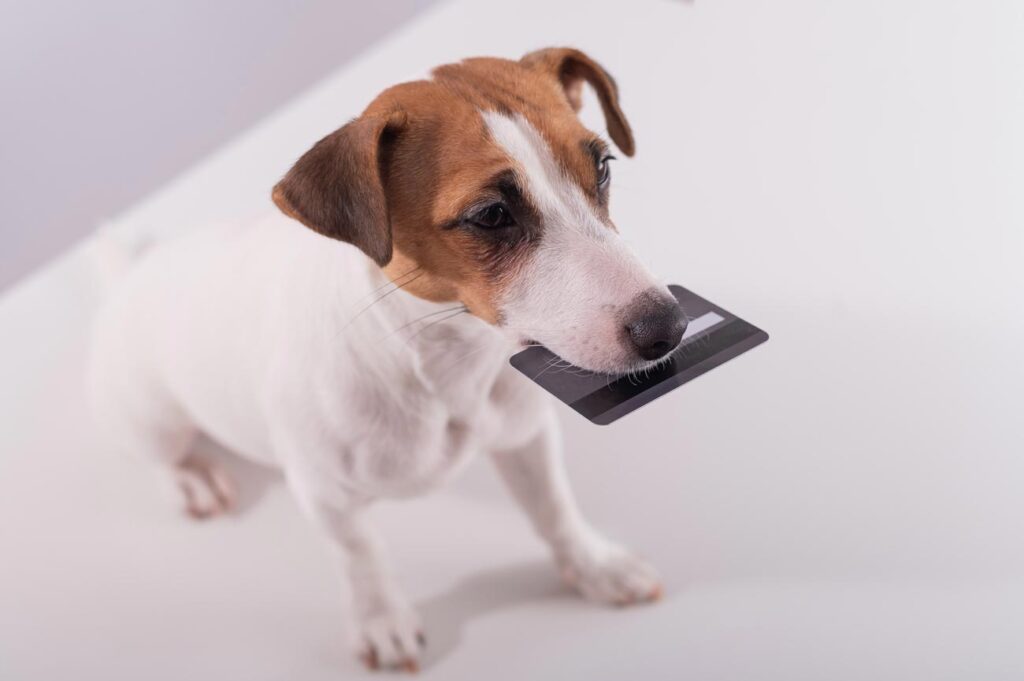
Whether or not you rescue or use a responsible breeder, the ongoing expenses of owning a dog are about the same. Pet ownership is expensive and you need to make sure you are ready for the financial commitment. Below I have provided a semi-detailed list of the costs you can expect to pay, including high-level estimates to help you avoid sticker shock.
- The Dog Cost$0.00 - $5,000
This can vary widely between adoption fees and breeder pricing
- Puppy Vaccines and Fixing$500 - $1,000
Initial vaccines and the cost of neutering or spaying
- Pet Insurance$700 - $2,000
Pet Insurance can be worth it, especially for new owners. It covers accidents and non-routine visits and services.
- Dog Training$500 - $3,000
Training ranges from a few hundred dollars for courses you can take to boot camps you can send your dog to. A reputable boot camp is well worth the money.
- Feeding Your Dog$700 - $1,000
This is a rough cost of dog food for a year.
- Supplies$1,000 - $2,000
Poop bags, leashes, collars, bed, treats, harnesses, crates, toys, etc…
- Vet Visits$500 - $1,500
Expect to go a lot the first year because your new friend WILL run into things, fall, hurt itself, and eat rocks and legos. The vet bills can add up.
- Ongoing Vaccines$100 - $200
Most boarding places or doggy day cares require your pups vaccines to be up to date.
- Grooming$500 - $1,200
De-shedding, haircuts, nail trimming, ear cleaning, teeth cleaning etc…
- Boarding$700 - $1,000
If you don’t have anyone to watch your dog when you go away, it’s crucial to find a boarding place you can trust. My estimated cost for this includes two vacations per year.
- Day Care$0.00 - $10,000
This can range from a dog walker during the week to full-on doggy daycare Monday through Friday. This can get very expensive so it’s good to have a plan.
3. Breed Matters
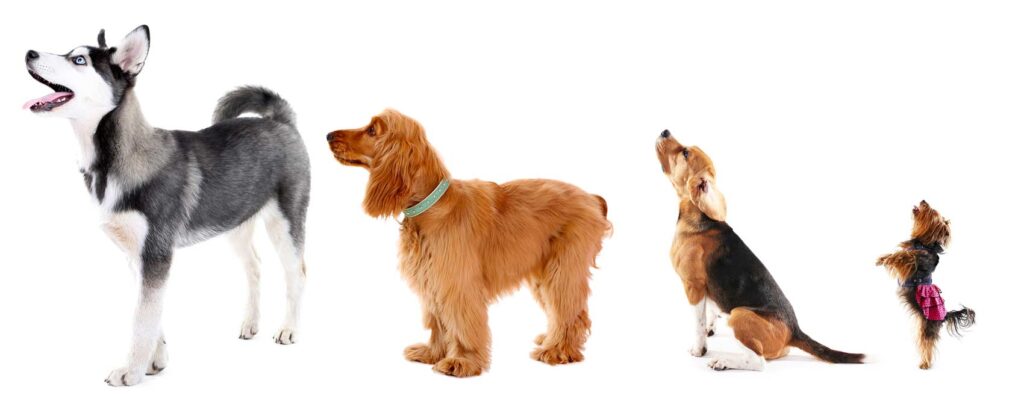
When deciding on a breed, it’s important to consider what purpose you want your new pet to serve. Do you want a vigilant guard dog? Do you want a lazy family dog? To get the ball rolling for you here is a quick list of a few primary purposes people get dogs.
Companionship and Loyalty
Family Pet
Protection
Service and Assistance
Activity or sport companion
Energy Levels and Lifestyle Matching

Be really honest with yourself about your own lifestyle when choosing your dream dog. You will both be happier in the end. It’s generally not a great idea to get a Belgian Malinois (the ones that jump out of military helicopters) if you live in a small apartment with a pet policy.
If you tend to hang at home watching Netflix and are looking for a cuddle buddy, you might want to check out a Dachshund, Shih Tzu, or Labrador Retriever. On the other hand, if you are extremely active and looking for a hiking partner, other dogs like Border Collie or Australian Shepherd might be better suited to you. Here is a list by the AKC of a few breeds with higher energy.
Size, Temperament, and Care Needs
Small dogs are great lapdogs, tend to live longer, can go more places with you, and are generally more affordable. However, these guys have small bladders, need to pee more, and probably can’t hack it on a long hike in the woods.
Large dogs love playing games and getting outside with you and can be great guard dogs. Unfortunately, they don’t live as long, are harder to travel with, and are more expensive overall.
Research the temperament of the dog breed you are interested in to ensure a good fit. While every dog has their own personality (mine is SUPER sassy), a few things are consistent between the breeds. Vitapet.com has a great summary of some common breeds and their temperaments, which you can check out here.
4. Suitable Environment
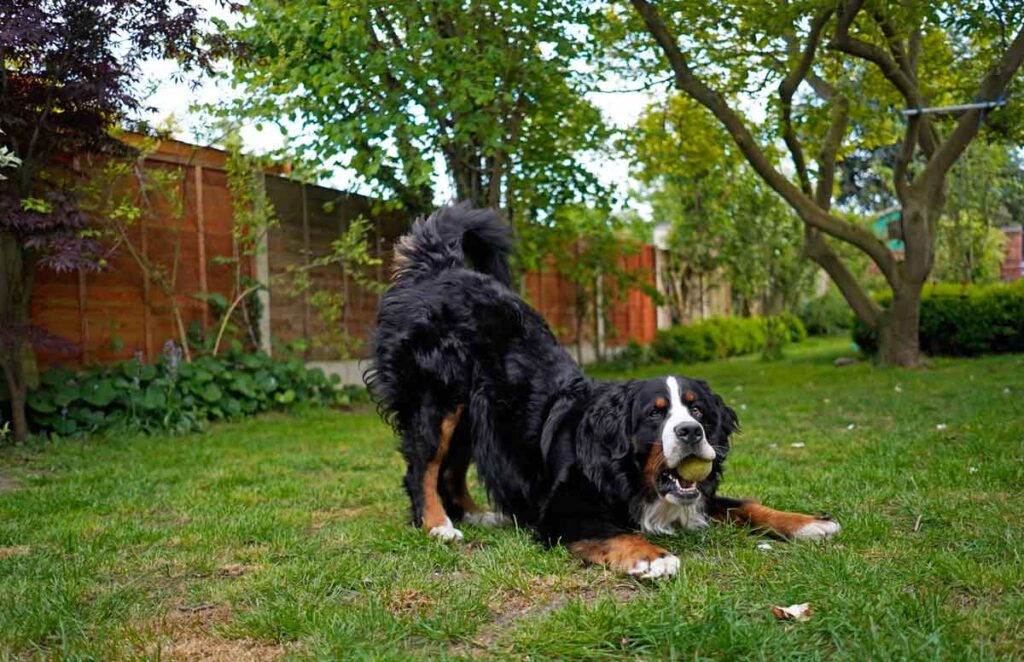
The right environment depends on a dog’s age and personality. If you have a chaotic household with small children, an older dog that likes the quiet probably isn’t the best fit, but a younger puppy with a lot of energy would most likely thrive in this environment.
A dog needs to have its own personal space to feel safe. This can be a small room, designated corner, or crate space. Dogs are den animals by nature and even domesticated dogs tend to prefer small, safe, enclosed spaces. It’s a common misconception that a crate is like a prison for a dog. Introduced correctly, a crate can be where your dog feels the most secure.
Apartment vs. House: Space Requirements
Whatever your current living situation, a dog will adapt to the living area you provide for them. You can get a big dog and live in a small house or apartment, and vice versa. However, just because you can doesn’t mean you should. A smaller dog is typically a better fit for an environment with less space.
However there are some exceptions; for example, we have a German Shepherd (Ava) and a small yard, which just means I need to walk her outside in the neighborhood for longer and find ways to mentally stimulate her. If you are interested in learning more about that, check out our blog on how to mentally stimulate your dog.
Outdoor Access and Exercise Needs
Speaking of yards, this is another important factor when considering what breed you should get. As a rule, for a larger dog that likes to run, a good patch of yard with 60-90 feet of unimpeded space is ideal. As noted above, you can get a dog with more energy and less space, but it’s going to require a lot more effort on your part to ensure they are getting adequate physical exercise and mental stimulation.
5. Training and Responsibility
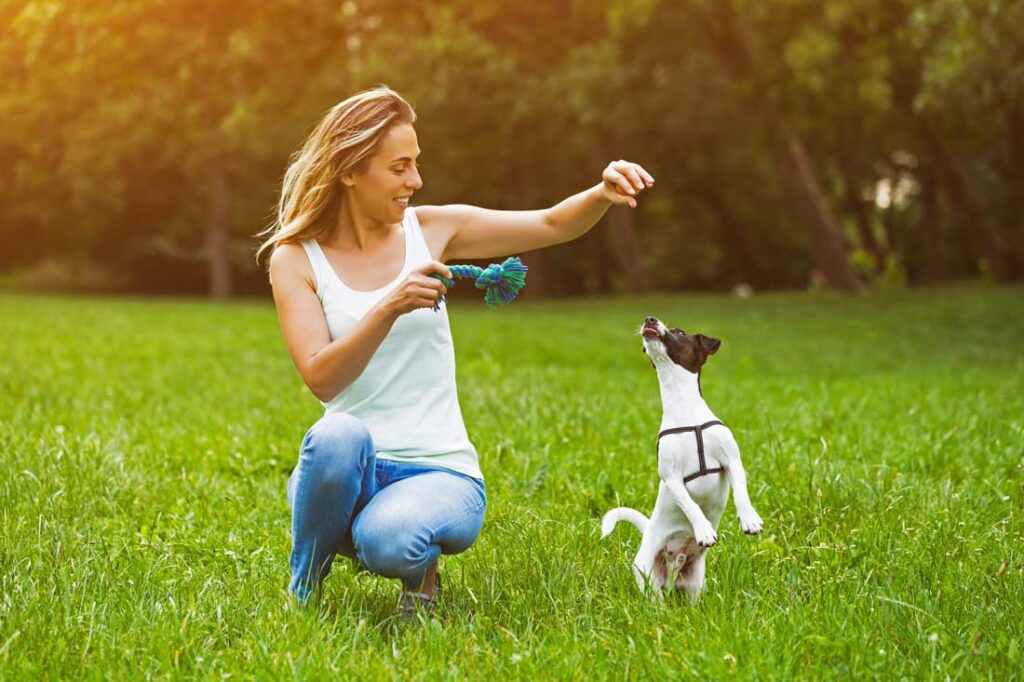
This section can be summed up in one sentence; if you are getting a dog, you need to train it and continue to work with it consistently for its entire life!
Sure, your pooch will remember its basic obedience, but it needs to be reinforced, and it’s important to spend time teaching your furry friend new tricks and commands from time to time. Food and treats will go a long way to help with this. It’s also important to make sure you begin house training right away.
Basic Commands and Behavioral Training
There are some basic commands every dog should know. This is known as obedience. Here is a list of the commands.
No – stop whatever you are doing, and leave it alone
Sit – sit and calm down
Stay – don’t move from where you are
Recall – come to me
Down – lie down where you are
Leave it – leave whatever you sniffing alone
Drop it – drop whatever is in your mouth.
Heel – come to my left side and walk with me
Off – get off whatever furniture you just climbed up on
Place – go to your bed, or designated place
Quiet – stop barking or whining
6. Grooming Your Dog
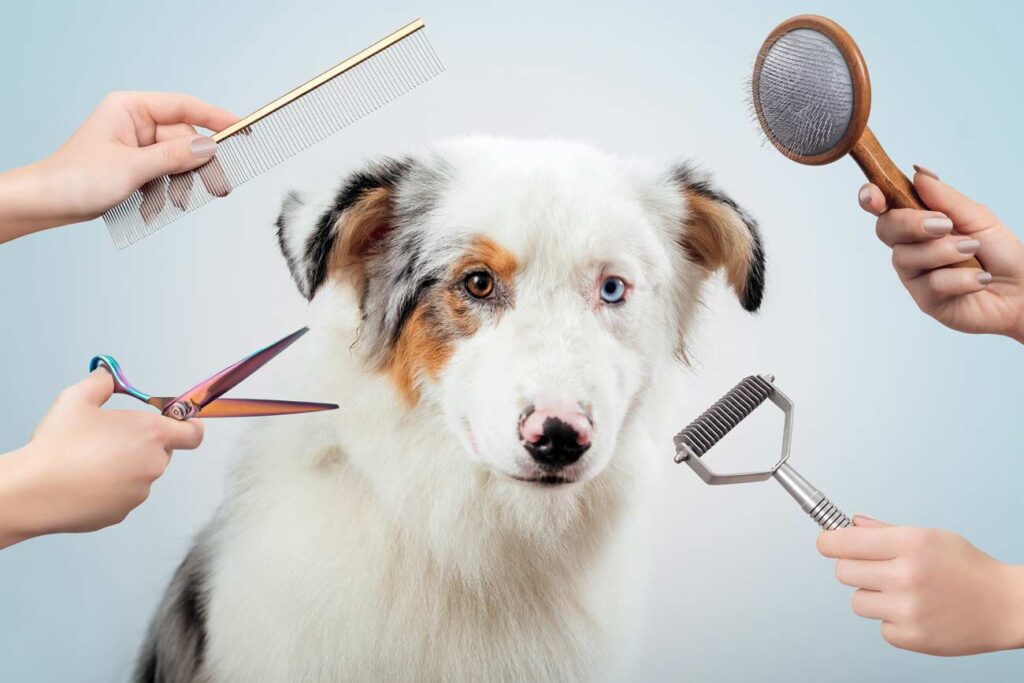
Every breed has different grooming requirements, but they all need their teeth brushed and their nails trimmed. This is important; their teeth will fall out if you neglect this, do you want a toothless dog?
Some breeds shed more than others, like a lot more. If you choose a breed that sheds a lot, make sure you have a plan for how you will deal with it! You will also need to bathe your dog a few times a year. Some dog coats include natural oils to keep them healthy, so it’s important not to overdo this one.
7. Making The Right Choice

So if you have made it this far, you are likely taking this seriously, and are certain you want to get a dog. That’s great news! Here are a few last things to consider.
Assessing Your Lifestyle and Commitment
Be real with yourself about your lifestyle. I’m thinking more for the larger breeds here, but please, do not get a Belgian Malinois, German Shepherd, Doberman, or other large breed if you aren’t prepared to put in the time to train and exercise them properly. Every day, dogs are abandoned in shelters or put down because their owners weren’t prepared. This is not fair to the dogs.
On that same token, it’s important to remember you are taking responsibility for another living being. Dogs are intelligent animals with real emotions. When you take Fido home, he will rely on you, bond with you, and give you unconditional love for the rest of his life. Don’t abandon him.
If you are already thinking, “Well if it doesn’t work out, I’ll just bring it to a shelter or re-home it,” please just don’t get a dog. These options should be considered as a last resort in very specific scenarios.
Conclusion
Dogs are great companions and make great additions to your family. I know that getting my dog changed my life. But, before you decide to get a puppy, ask yourself if you are ready for the long-term commitment.
So ‘Should I get a dog’? If you are prepared to put in the required work to ensure both of you have a good life, then absolutely! Once you enter the world of dog ownership and bring home your new dog, there are plenty of resources to help find your way, like the Woof Wire!
Frequently Asked Questions
Is It A Good Idea To Get A Dog?
It’s a great idea! Dog’s make great pets. Just be sure to consider your family and other pets.
Should I Get A Dog If I Work Full Time?
It can work if your schedule can be flexible or your family can support you. If your whole family can help out (relatives), or you have kids that help pick up the slack. Day care is an option, but it ultimately depends how much time you will be away for. Sometimes it doesn’t make sense.
How Do You Know You're Not Ready For A Dog?
The fact you are the type of person to ask this question is a good sign. Dog owners need to be responsible and consistent, some psychologists recommend to start with a plant, and if you can take care of that you can start seriously considering a pet.
Will My Dog Along With My Current Pets?
Bringing home a new pet can upset your other animals, but with the right structure and careful introduction, all of your animals will get along or at least tolerate each other.
Should I Get A Dog If I Have Young Children?
It’s important to get the right pet if you have kids, if your kids are very young it might be better to hold off, or make sure you choose a breed with a relaxed temperament.

